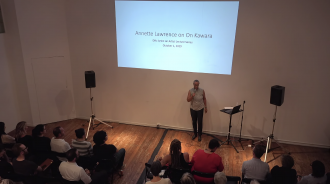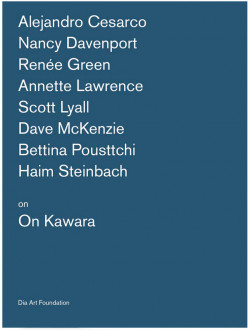On Kawara
Long-term view, Dia Beacon
Overview
On Kawara was deeply concerned with the ways humans experience and record time. Kawara began his Today Series of paintings on January 4, 1966, and continued to work on them until his death in mid-2014. Adhering to a rigorous set of rules that he established, Kawara required that each painting be completed on the date depicted on its surface and in the language and grammar of the country in which it was completed. In addition to these formal conventions, the Today Series paintings are stored in handmade cardboard boxes along with a clipping from the local newspaper. Occasionally these boxes are exhibited, and particularly in earlier works, phrases or text from the clippings would form part of the title as well. Combining the individual with the universal, the Today Series is both a deeply personal journey (asserting that I was here on this day), but also the story of humanity and struggles experienced on a much larger scale—as captured through the lens of daily newspaper reportage.
The Today Series was presented at Dia Center for the Arts from January 1 through December 31, 1993; each calendar month saw a different rotation of Date Paintings, chosen exclusively from those made in New York City—a thousand works in total. Kawara’s One Million Years was also presented for the first time as an audio piece in that exhibition. Alternating between two voices, a female reader for even years and a male reader for odd years, One Million Years is an oral reading from Kawara’s twenty four-volume publication by the same title. Both artworks reflect the influences of the micro and macro in Kawara’s work, and how an individual lifespan forms a part of human history.
On Kawara was interested in time—its measurement in days, years, centuries, and eons. Each Date Painting in his Today series, the magnum opus that he began in 1966, is a monochrome field on which the date that the painting was executed is written according to the language and calendar of the country where Kawara was at the time. If he did not complete a painting by midnight, he destroyed it. Some days he made two paintings. Very occasionally, he made three. But most days he made one.
The paintings in the series conform to one of eight sizes, produced in a horizontal format, ranging from eight by ten to sixty-one by eighty-nine inches. For each work the artist mixed the paint afresh, so that the color of each is unique. Tonalities in the brown-gray and blue-black range dominate the paintings of his last decades. Four or five coats of acrylic are evenly applied to the canvas, creating a dense matte surface. Letters, numbers, and punctuation marks are then built up by hand, rather than with the aid of stencils. Initially he used an elongated Gill Sans typeface, later a quintessentially modernist Futura. Despite these variations, Kawara maintained that the letters and hues are of no symbolic significance, nor is the choice of a work’s color more connotative than its measurements.
Each painting is stored in a handmade cardboard box, most with a clipping from a newspaper published in the same city and on the same day that the painting was made. (Kawara has exhibited the works both with and without their boxes.) History as recorded in daily events, whether global or local, is bound together with a residue of individual activity. The subtle traces of manual execution are a counterpoint to the dialectic between order and chance—that is, between the regularity of calendrical and linguistic conventions and the arbitrary strictures of size and color. Kawara created Date Paintings in 137 cities worldwide, a project that ended only with his death.
Thirty-six Date Paintings are on view at Dia Beacon, one for each year from the beginning of the series until the millennium (including the exceptional Friday, November 3, 1989, when he completed a pair of works). Executed in the same small format and similar dark tonalities, they were made in locations from Tokyo to Stockholm, from New York to Nova Scotia. Their starting point is contemporary with some of the earliest works in Dia’s collection.
This installation contains an additional, unseen component: its air is purified by Japanese white charcoal installed at the artist’s request under the wood floor. This charcoal is known for absorbing chemicals, freshening air, removing humidity, and releasing it back into the air when the conditions are drier. While this material is traditionally used to ionize the air in Japanese houses, Kawara’s subtle gesture may or may not affect viewers in ways they consciously register.

1. 24,698 Days (100 Years Calendar), August 6, 2000
Ink and silkscreen on paper
Today series, 1966–2014
Acrylic on canvas
2. JUNE 16, 1966
1966
3. FEB. 14, 1967
1967
4. 5 ABR. 68
1968
5. NOV. 20, 1969
1969
6. MAY 25, 1970
1970
7. 2. JAN. 1971
1971
8. 28 DEC. 1972
1972
9. OCT. 13, 1973
1973
10. MAR. 24, 1974
1974
11. FEB. 19, 1975
1975
12. 26. JULI 1976
1976
13. SEPT. 12, 1977
1977
14. 27 DEC. 1978
1978
15. MAY 22, 1979
1979
16. OCT. 11, 1980
1980
17. AUG. 3, 1981
1981
18. JAN. 21, 1982
1982
19. APR. 25, 1983
1983
20. 4 AUG. 1984
1984
21. MAY 9, 1985
1985
22. 30. NOV. 1986
1986
23. JAN. 28, 1987
1987
24. 15 JUL. 1988
1988
25. NOV. 3, 1989
1989
Diptych
26. 26 OTT. 1990
1990
27. 6 MRT. 1991
1991
28. AUG. 29, 1992
1992
29. JAN. 1, 1993
1993
30. JUNE 7, 1994
1994
31. 27 MARS 1995
1995
32. SEPT. 8, 1996
1996
33. FEB. 11, 1997
1997
34. 19 DEC. 1998
1998
35. APR. 30, 1999
1999
36. 18 MAI 2000
2000
1: Estate of On Kawara
2–14: Dia Art Foundation; gift of Lannan Foundation
15–32: Dia Art Foundation; gift of One Million Years Foundation
33–36: One Million Years Foundation; long-term loan
On Kawara (1932–2014) preferred to count his age in days instead of years. His lifespan numbered 29,771 days. Kawara’s earliest exhibitions include the first Nippon Exhibition at the Tokyo Metropolitan Art Museum in 1953, and at the Takemiya and Hibiya galleries the following year. In 1965 he settled in New York City, where he remained an intermittent resident for the rest of his life. His work was exhibited at New York’s Dwan Gallery in 1967, and his one-person exhibition One Million Years
was shown in Düsseldorf, Paris, and Milan in 1971. Kawara’s work was included in Documenta in 1972, 1982, and 2002 in Kassel, Germany, the 1970 Tokyo Biennale, and the 1976 Kyoto and Venice Biennales. He won the Carnegie Prize in 1991 and the Kunstpreis Aachen the following year. In 1993 Dia held the yearlong exhibition One Thousand Days One Million Years, for which Kawara installed paintings from the Today series that were produced in New York City. The exhibition also included a book work, One Million Years (Past), and a sound work, One Million Years (Future). Twenty years later, and in commemoration of Dia:Beacon’s tenth anniversary, Dia organized a live reading of Kawara’s One Million Years, and produced a new recording of the work which was released as a compact disc in spring 2014.
Artist
On Kawara
On Kawara was born in Kariya, Japan, in 1933. He died in New York City in 2014.
Selected Works on View
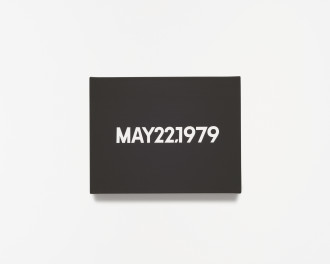
On Kawara
MAY 22, 1979, 1979
Go to MAY 22, 1979 page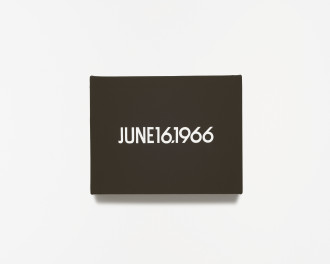
On Kawara
JUNE 16, 1966, 1966
Go to JUNE 16, 1966 page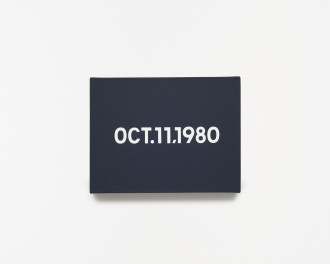
On Kawara
OCT. 11, 1980, 1980
Go to OCT. 11, 1980 page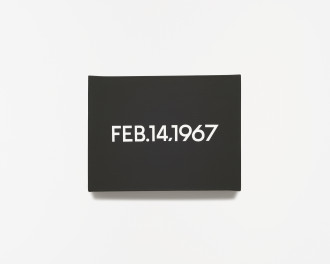
On Kawara
FEB. 14, 1967, 1967
Go to FEB. 14, 1967 page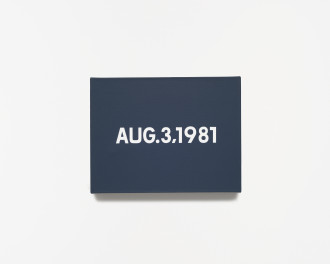
On Kawara
AUG. 3, 1981, 1981
Go to AUG. 3, 1981 page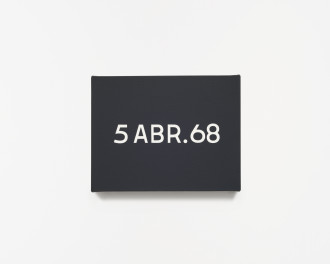
On Kawara
5 ABR. 68, 1968
Go to 5 ABR. 68 page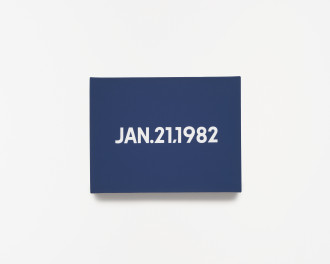
On Kawara
JAN. 21, 1982, 1982
Go to JAN. 21, 1982 page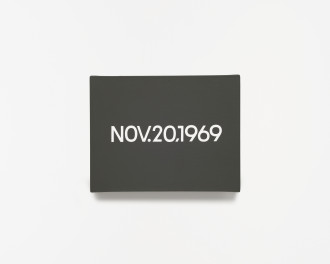
On Kawara
NOV. 20, 1969, 1969
Go to NOV. 20, 1969 page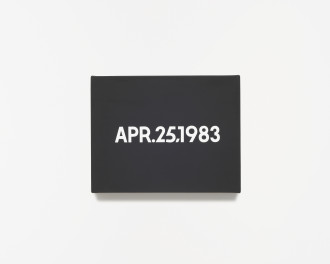
On Kawara
APR. 25, 1983, 1983
Go to APR. 25, 1983 page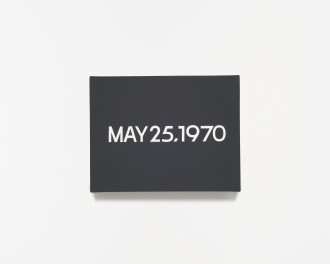
On Kawara
MAY 25, 1970, 1970
Go to MAY 25, 1970 page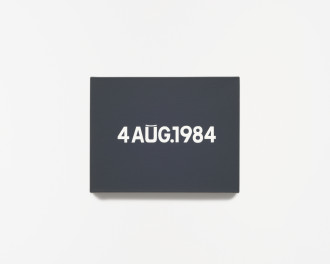
On Kawara
4 AUG. 1984, 1984
Go to 4 AUG. 1984 page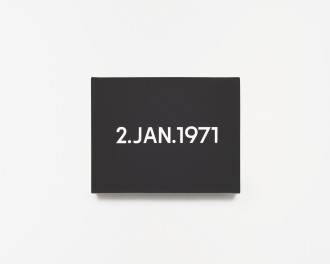
On Kawara
2 JAN. 1971, 1971
Go to 2 JAN. 1971 page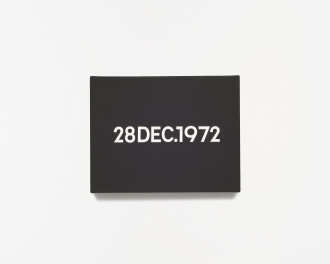
On Kawara
28 DEC. 1972, 1972
Go to 28 DEC. 1972 page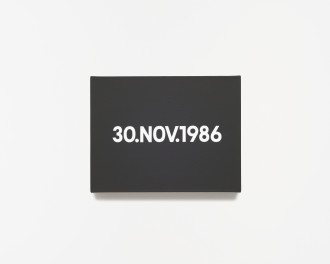
On Kawara
30.NOV.1986, 1986
Go to 30.NOV.1986 page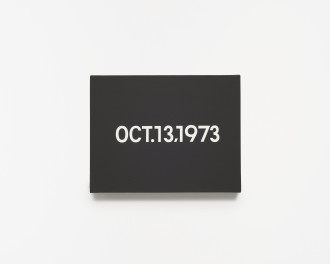
On Kawara
OCT. 13, 1973, 1973
Go to OCT. 13, 1973 page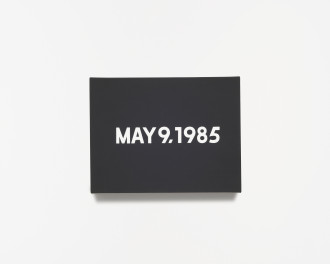
On Kawara
MAY 9, 1985, 1985
Go to MAY 9, 1985 page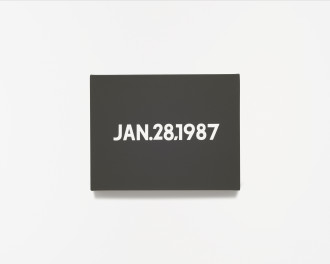
On Kawara
JAN. 28, 1987, 1987
Go to JAN. 28, 1987 page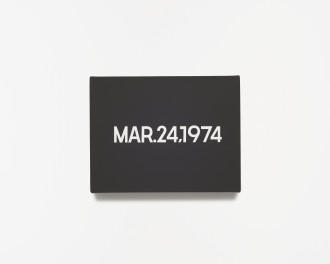
On Kawara
MAR. 24, 1974, 1974
Go to MAR. 24, 1974 page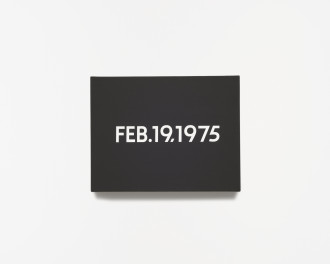
On Kawara
FEB. 19, 1975, 1975
Go to FEB. 19, 1975 page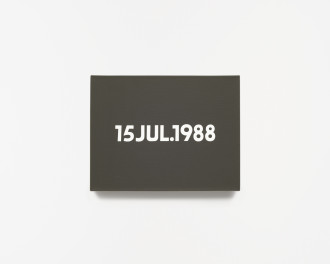
On Kawara
15 JUL. 1988, 1988
Go to 15 JUL. 1988 page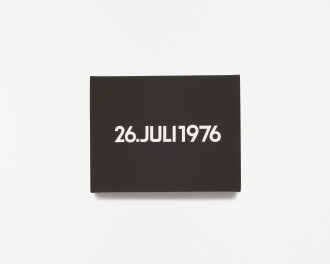
On Kawara
26. JULI 1976, 1976
Go to 26. JULI 1976 page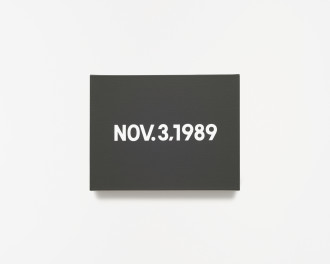
On Kawara
NOV. 3 1989, 1989
Go to NOV. 3 1989 page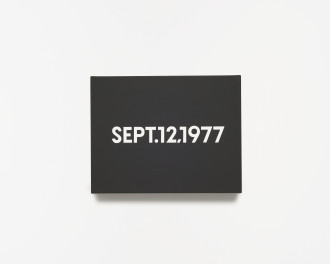
On Kawara
SEPT. 12, 1977, 1977
Go to SEPT. 12, 1977 page
On Kawara
27 DEC. 1978, 1978
Go to 27 DEC. 1978 page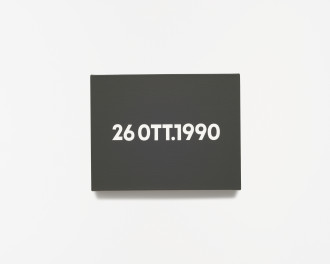
On Kawara
26 OTT. 1990, 1990
Go to 26 OTT. 1990 page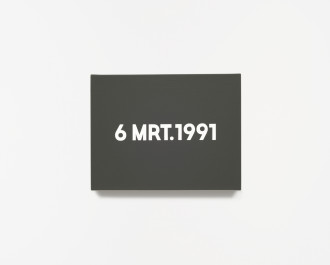
On Kawara
6 MRT.1991, 1991
Go to 6 MRT.1991 page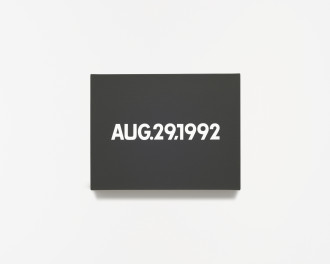
On Kawara
AUG. 29, 1992, 1992
Go to AUG. 29, 1992 page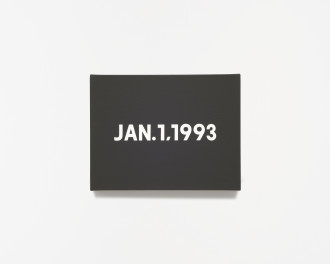
On Kawara
JAN. 1, 1993, 1993
Go to JAN. 1, 1993 page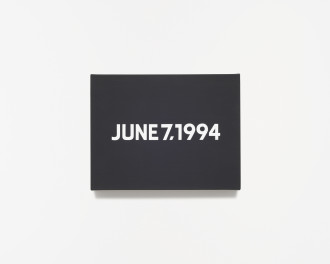
On Kawara
JUNE 7, 1994, 1994
Go to JUNE 7, 1994 page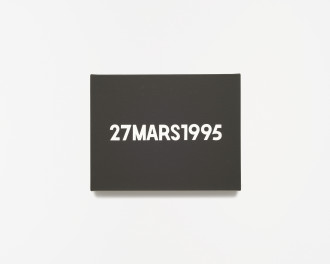
On Kawara
27 MARS 1995, 1995
Go to 27 MARS 1995 page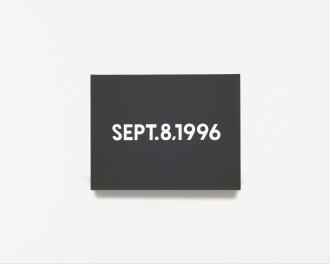
On Kawara
SEPT. 8, 1996, 1996
Go to SEPT. 8, 1996 page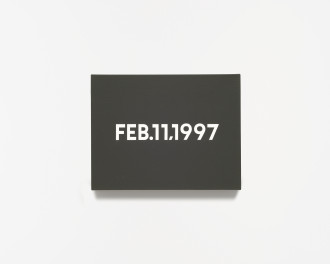
On Kawara
FEB. 11, 1997, 1997
Go to FEB. 11, 1997 page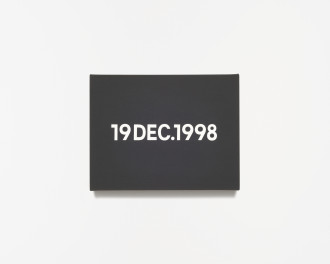
On Kawara
19 DEC. 1998, 1998
Go to 19 DEC. 1998 page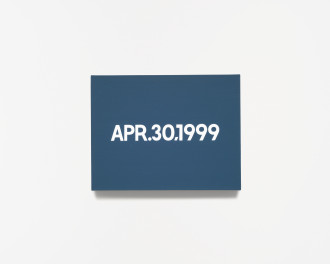
On Kawara
APR. 30, 1999, 1999
Go to APR. 30, 1999 page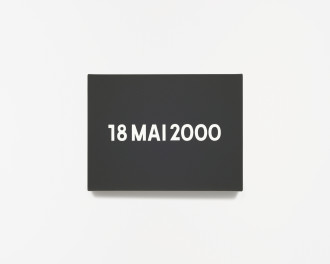
On Kawara
18 MAI 2000, 2000
Go to 18 MAI 2000 page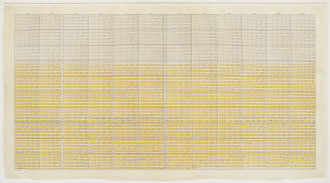
On Kawara
24,698 Days (100 Years Calendar), 2000
Go to 24,698 Days (100 Years Calendar) pageBooks
Artists on On Kawara
Alejandro Cesarco, Nancy Davenport, Renée Green, Annette Lawrence, Scott Lyall, Dave McKenzie, Bettina Pousttchi, and Haim Steinbach explore the practice of On Kawara in this Artists on Artists volume.
Explore
Alejandro Cesarco on On Kawara
Move to Alejandro Cesarco on On Kawara pageDave McKenzie on On Kawara
Move to Dave McKenzie on On Kawara pageHaim Steinbach on On Kawara
Move to Haim Steinbach on On Kawara pageNancy Davenport on On Kawara
Move to Nancy Davenport on On Kawara pageScott Lyall on On Kawara
Move to Scott Lyall on On Kawara page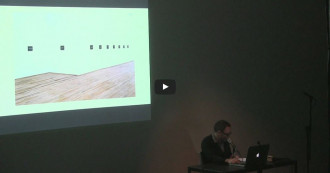
Alejandro Cesarco on On Kawara
Move to Alejandro Cesarco on On Kawara page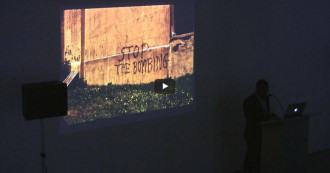
Dave McKenzie on On Kawara
Move to Dave McKenzie on On Kawara page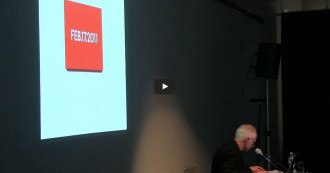
Haim Steinbach on On Kawara
Move to Haim Steinbach on On Kawara page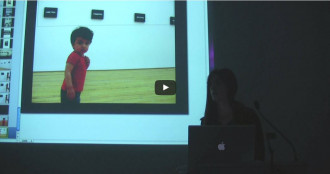
Nancy Davenport on On Kawara
Move to Nancy Davenport on On Kawara page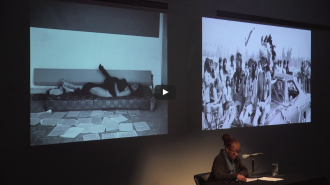
Renée Green on Chantal Akerman and On Kawara
Move to Renée Green on Chantal Akerman and On Kawara page
Scott Lyall on On Kawara
Move to Scott Lyall on On Kawara pageAnnette Lawrence on On Kawara
Move to Annette Lawrence on On Kawara page